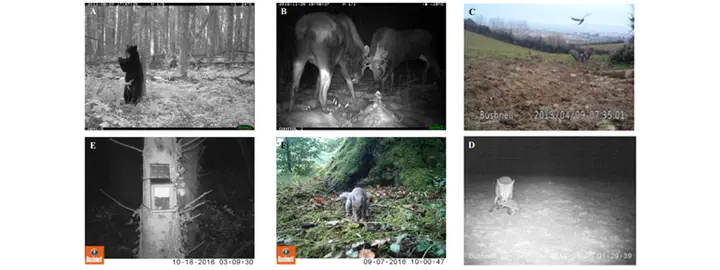
Abstract
An understanding of animal behaviour is important if conservation initiatives are to be effective. However, quantifying the behaviour of wild animals presents significant challenges. Remote-sensing camera traps are becoming increasingly popular survey instruments that have been used to non-invasively study a variety of animal behaviours, yielding key insights into behavioural repertoires. They are well suited to ethological studies and provide considerable opportunities for generating conservation-relevant behavioural data if novel and robust methodological and analytical solutions can be developed. This paper reviews the current state of camera-trap-based ethological studies, describes new and emerging directions in camera-based conservation behaviour, and highlights a number of limitations and considerations of particular relevance for camera-based studies. Three promising areas of study are discussed: (1) documenting anthropogenic impacts on behaviour; (2) incorporating behavioural responses into management planning and (3) using behavioural indicators such as giving up densities and daily activity patterns. We emphasize the importance of reporting methodological details, utilizing emerging camera trap metadata standards and central data repositories for facilitating reproducibility, comparison and synthesis across studies. Behavioural studies using camera traps are in their infancy; the full potential of the technology is as yet unrealized. Researchers are encouraged to embrace conservation-driven hypotheses in order to meet future challenges and improve the efficacy of conservation and management processes.